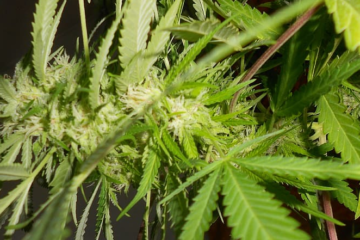A recent federally funded study has revealed that young adults are now three times more likely to use marijuana daily or nearly daily than alcohol. The findings highlight significant shifts in substance use patterns across different age groups, underscoring marijuana’s growing prominence in modern society.
Young Adults Lead the Shift Toward Frequent Marijuana Use
In the youngest age group surveyed, ages 19 to 30, frequent marijuana use is significantly outpacing alcohol consumption. According to the University of Michigan’s Monitoring the Future (MTF) Panel Study, 10.4% of respondents in this age bracket reported using marijuana daily or nearly daily, compared to just 3.6% who consumed alcohol at a similar frequency.
The study, led by research professor Megan E. Patrick, analysed data from a nationwide survey of about 20,000 people across three age categories: 19 to 30, 35 to 50, and 55 to 65. Findings suggest that cannabis is increasingly replacing alcohol in the daily habits of younger adults, reflecting broader societal changes in how these substances are perceived and used.

Midlife Adults Show Balanced Use Between Cannabis and Alcohol
For those aged 35 to 50, the study found near parity between the two substances. Roughly 7.8% of this group reported daily or near-daily (DND) alcohol consumption, while 7.5% reported the same level of cannabis use. This balance is unique to this demographic and marks a departure from trends seen in older and younger age groups.
Interestingly, patterns in this age range suggest that cannabis use has been rising steadily over the past decade, while alcohol use has seen a slight decline. Such shifts may indicate changing preferences influenced by health considerations, availability, and evolving cultural norms.
Older Adults Still Favour Alcohol Over Cannabis
Among the oldest respondents, aged 55 to 65, alcohol remains the more commonly used substance. The study found that 11.4% of older adults drink daily or nearly daily, compared to 5.2% who use marijuana at the same frequency. However, the gap may narrow in the coming years if current trends persist.
This older demographic’s preference for alcohol reflects longstanding habits and cultural attitudes. Yet the increasing prevalence of cannabis use in this group suggests that marijuana may be gaining acceptance, even among those who grew up during an era of stricter regulations and stigma surrounding its use.
Shifting Trends Over Time
The data reveals broader trends over the past decade. Among young adults, daily cannabis use has increased by 75%, jumping from 6% in 2013 to 10.4% in 2023. In contrast, alcohol use in the same group has decreased by about 35% during the same period.
- Key statistics:
- Cannabis use (young adults): Increased by 4.4 percentage points in 10 years.
- Alcohol use (young adults): Decreased by 1.9 percentage points in 10 years.
For midlife adults, alcohol consumption saw a 20% decline in the past five years, whereas cannabis use continued its steady climb. Notably, during the COVID-19 pandemic, alcohol consumption spiked briefly before declining again, illustrating how external events can influence substance use behaviours.
Broader Implications for Society and Policy
The study’s findings resonate with other research highlighting marijuana’s increasing role as a substitute for alcohol and other substances. A Bloomberg Intelligence survey noted that cannabis substitution for alcohol is “soaring,” particularly as legalisation expands and perceptions of harm shift. Additional studies have linked marijuana use to declines in beer sales and reduced consumption of painkillers and cigarettes.
The growing preference for cannabis also reflects public opinion. Surveys by organisations like Gallup and the American Psychiatric Association consistently show that Americans view marijuana as less harmful and less addictive than alcohol, tobacco, or opioids.
| Age Group | Cannabis Use Increase | Alcohol Use Decrease | Cannabis > Alcohol (DND) |
|---|---|---|---|
| 19-30 years | +4.4% | -1.9% | Yes |
| 35-50 years | +Steady growth | -20% (5 years) | Nearly equal |
| 55-65 years | +Gradual rise | Stable | No |
What Lies Ahead?
If these trends continue, we may see a complete reversal of traditional substance use patterns within the next decade. Younger generations’ preference for cannabis and its relative safety profile could significantly impact industries and public health policies. Policymakers, healthcare providers, and businesses must adapt to this changing landscape, where marijuana is no longer a fringe substance but a daily habit for millions of Americans.
As societal attitudes evolve, so too may the regulations and supports surrounding cannabis use. With more states and countries moving towards legalisation, these findings provide a timely insight into how marijuana is reshaping modern lifestyles and cultural norms.



